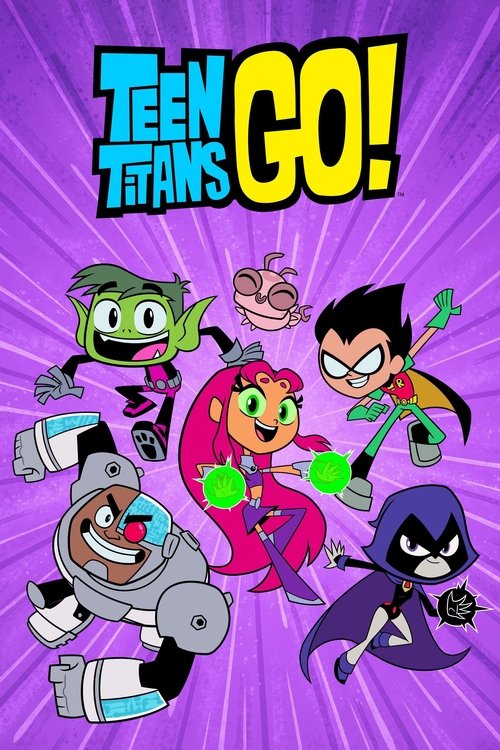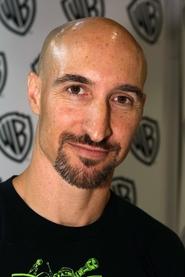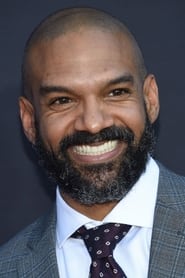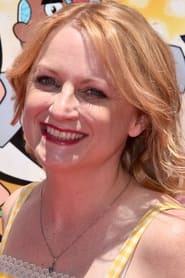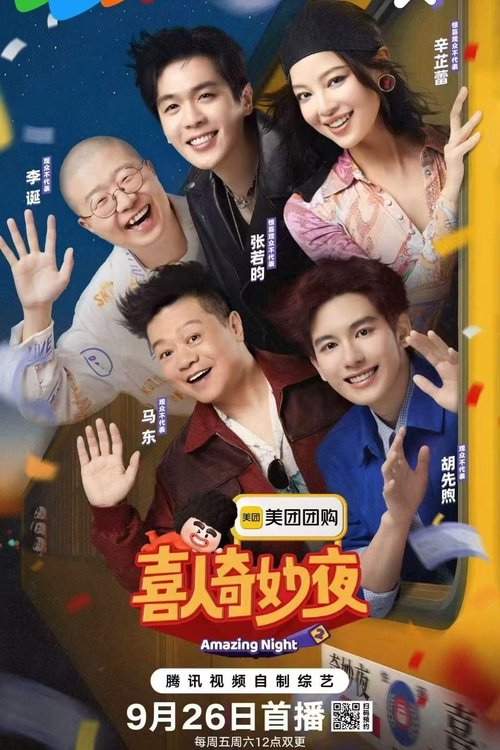
Ask Your Own Question
What is the plot?
In the episode "The Best Robin," the story begins with the Teen Titans lounging in their common room, where they are discussing who is the best Robin. Each Titan presents their case for their favorite Robin, leading to a heated debate. The Titans decide to settle the argument by having a competition to determine who is the best Robin. They agree that each Titan will take turns showcasing their skills and abilities, with the winner being crowned the best Robin.
The first challenge is a physical competition, where the Titans must navigate an obstacle course designed to test their agility and strength. Robin, confident in his abilities, takes the lead and performs exceptionally well, showcasing his acrobatics and combat skills. However, as the other Titans take their turns, they each bring their unique flair to the course. Beast Boy transforms into various animals to gain an advantage, while Cyborg uses his technological enhancements to speed through the obstacles. Starfire and Raven also display their powers, with Starfire flying over the course and Raven using her magic to teleport past obstacles.
After the physical challenge, the Titans move on to a trivia round, where they must answer questions about the history of the Robins. Each Titan struggles with different questions, but Robin shines again, demonstrating his extensive knowledge. However, the other Titans manage to answer some questions correctly, keeping the competition close. Tensions rise as they realize that the competition is not just about physical prowess but also about intelligence and teamwork.
The next challenge is a teamwork exercise, where the Titans must work together to complete a mission. They are tasked with retrieving a stolen item from a villain's lair. The Titans strategize and split into teams, with Robin leading one group while the others follow his plan. However, as they infiltrate the lair, they encounter unexpected traps and obstacles. Robin's leadership is put to the test as he must adapt their strategy on the fly. The Titans face off against the villain's henchmen, leading to a series of comedic and chaotic battles.
During the confrontation, Robin becomes increasingly frustrated with his teammates, feeling that they are not taking the mission seriously. This leads to a moment of conflict where Robin confronts the other Titans about their lack of focus. The Titans, feeling hurt by Robin's words, argue back, and the team begins to fracture. They struggle to work together, and their bickering causes them to miss opportunities to defeat the henchmen.
As the situation escalates, the villain appears, and the Titans must put aside their differences to face him. They realize that they need to work together to succeed. In a climactic battle, the Titans combine their powers and skills, executing a well-coordinated attack against the villain. Robin, seeing his teammates come together, feels a sense of pride and unity. They manage to defeat the villain and retrieve the stolen item, solidifying their bond as a team.
After the mission, the Titans return to their common room, where they reflect on the competition. They realize that being the best Robin is not just about individual skills but also about teamwork and friendship. They decide that instead of declaring a single winner, they are all the best Robins in their own way. The episode ends with the Titans celebrating their victory together, laughing and enjoying each other's company, reinforcing their camaraderie.
What is the ending?
In the final episode of Teen Titans Go!, the Titans face off against their greatest enemy, the villainous Trigon. After a series of comedic and chaotic events, they manage to defeat him and restore peace. The episode concludes with the Titans celebrating their victory, showcasing their strong bond and teamwork.
As the episode unfolds, we begin with the Titans--Robin, Starfire, Raven, Beast Boy, and Cyborg--gathered in their living room, where they are engaged in a typical day of playful banter and antics. The atmosphere is light-hearted, filled with laughter and camaraderie. However, the mood shifts when Raven receives a distressing message from her father, Trigon, who threatens to invade their world.
Scene transitions to the Titans preparing for battle. Each character showcases their unique abilities and personalities as they gear up. Robin, ever the leader, takes charge, rallying the team with a motivational speech. Starfire expresses her determination to protect her friends, while Beast Boy and Cyborg engage in humorous exchanges, lightening the tension. Raven, torn between her loyalty to her friends and her complicated relationship with her father, struggles internally but ultimately decides to join the fight.
As they confront Trigon, the Titans face overwhelming odds. Trigon, a towering figure of darkness and power, looms over them, casting a shadow that symbolizes the threat he poses. The battle is intense, filled with vibrant colors and dynamic action sequences. Each Titan uses their powers in creative ways, showcasing their growth and teamwork. Robin leads the charge, coordinating their attacks, while Starfire unleashes her starbolts, and Cyborg utilizes his technological gadgets.
Raven, initially hesitant, finds her strength as she taps into her powers. In a pivotal moment, she confronts Trigon, channeling her emotions and her connection to her friends. The Titans rally around her, providing support and encouragement. This moment of unity is visually striking, with bright light emanating from Raven as she stands against her father.
The climax of the battle sees the Titans combining their powers in a spectacular display. They create a powerful energy blast that overwhelms Trigon, ultimately leading to his defeat. The scene is filled with dramatic music and vibrant visuals, emphasizing the triumph of teamwork and friendship.
As the dust settles, the Titans stand victorious, breathing heavily but filled with a sense of accomplishment. They share a moment of relief and joy, celebrating their victory with high-fives and laughter. Each character reflects on their journey, acknowledging the strength they found in each other. Robin feels a sense of pride in his leadership, Starfire beams with happiness, Beast Boy cracks jokes to lighten the mood, Cyborg revels in the victory, and Raven, though still complex, feels a sense of closure regarding her relationship with her father.
The episode concludes with the Titans returning to their everyday lives, showcasing their unbreakable bond. They gather for a meal, filled with laughter and playful teasing, reinforcing the theme of friendship and teamwork. The final scene fades out with the Titans enjoying their time together, a testament to their resilience and unity in the face of adversity. Each character is left in a place of growth, having faced their fears and emerged stronger together.
Is there a post-credit scene?
In the show "Teen Titans Go!" produced in 2013, there are indeed post-credit scenes that often provide humorous or whimsical conclusions to the episodes. These scenes typically feature the Titans engaging in light-hearted banter or absurd situations that reflect their personalities and the comedic tone of the series.
For example, in one episode, after the main storyline concludes, the screen cuts to the Titans in the common room. Robin is seen trying to impress Starfire with a new dance move he learned, but he ends up tripping and falling over a couch. The other Titans burst into laughter, and Cyborg quips about Robin's lack of coordination. This moment encapsulates the playful dynamics of the team, showcasing their camaraderie and the light-hearted nature of the show.
These post-credit scenes serve to reinforce the comedic elements of the series, often leaving viewers with a final chuckle before the episode ends. They are a signature aspect of "Teen Titans Go!" that adds to the overall enjoyment and replay value of the episodes.
What are the main motivations of Robin in the series?
Robin, as the leader of the Teen Titans, is driven by a strong desire to prove himself and to protect his friends. His motivations often stem from his need for validation and his ambition to be the best hero he can be. This leads him to take on challenges that sometimes border on obsessive, such as when he tries to outdo his teammates or when he seeks to impress Batman.
How does Raven's character develop throughout the series?
Raven's character development is marked by her struggle to balance her dark powers with her desire for friendship and acceptance. Throughout the series, she often grapples with her emotions, showcasing her sarcastic demeanor as a defense mechanism. Key episodes reveal her vulnerabilities, such as when she confronts her past or when she tries to connect with her teammates, highlighting her growth from a solitary figure to a more integrated member of the team.
What is the significance of Beast Boy's transformations in the show?
Beast Boy's ability to transform into various animals serves as a comedic element but also reflects his playful and carefree personality. His transformations often lead to humorous situations, but they also symbolize his adaptability and resourcefulness. In episodes where he faces self-doubt or insecurity, his transformations can also represent his desire to fit in and be accepted by his peers.
How does Starfire's understanding of Earth culture evolve?
Starfire's journey in understanding Earth culture is a recurring theme in the series. Initially, she struggles with language and social norms, leading to comedic misunderstandings. As the series progresses, her interactions with the other Titans help her learn and adapt, showcasing her growth. Episodes that focus on her attempts to celebrate Earth holidays or participate in human activities highlight her increasing comfort and integration into the team.
What role does Cyborg play in the dynamics of the Teen Titans?
Cyborg serves as the team's tech expert and comic relief, often using his gadgets to solve problems. His character embodies the blend of human and machine, which sometimes leads to conflicts about identity and acceptance. His relationships with other Titans, particularly with Beast Boy, are characterized by a brotherly bond that includes playful banter and support during serious moments, emphasizing his role as both a protector and a friend.
Is this family friendly?
"Teen Titans Go!" is generally considered family-friendly, but it does contain some elements that might be objectionable or upsetting for certain children or sensitive viewers. Here are a few aspects to be aware of:
-
Mild Violence: The show features cartoonish violence, such as characters engaging in battles, using superpowers, and occasionally getting hurt in exaggerated ways. While it's not graphic, some scenes may be intense for younger viewers.
-
Silly Humor: The humor often includes slapstick and absurd situations that might be confusing or unsettling for some children. Characters frequently find themselves in bizarre scenarios that defy logic.
-
Emotional Conflicts: There are episodes that explore themes of jealousy, rivalry, and friendship conflicts among the Titans. These emotional struggles can sometimes lead to hurt feelings or misunderstandings.
-
Silly or Irresponsible Behavior: The Titans often engage in reckless or irresponsible actions, which might send mixed messages about behavior and consequences.
-
Parody and Satire: The show frequently parodies other media and superhero tropes, which may not resonate with all viewers, especially younger children who may not understand the references.
-
Mild Language: There are instances of mild language or phrases that might be considered inappropriate for very young audiences, though nothing overtly offensive.
Overall, while "Teen Titans Go!" is designed for a younger audience and is filled with humor and adventure, parents may want to preview episodes to ensure they align with their values and the sensitivities of their children.

